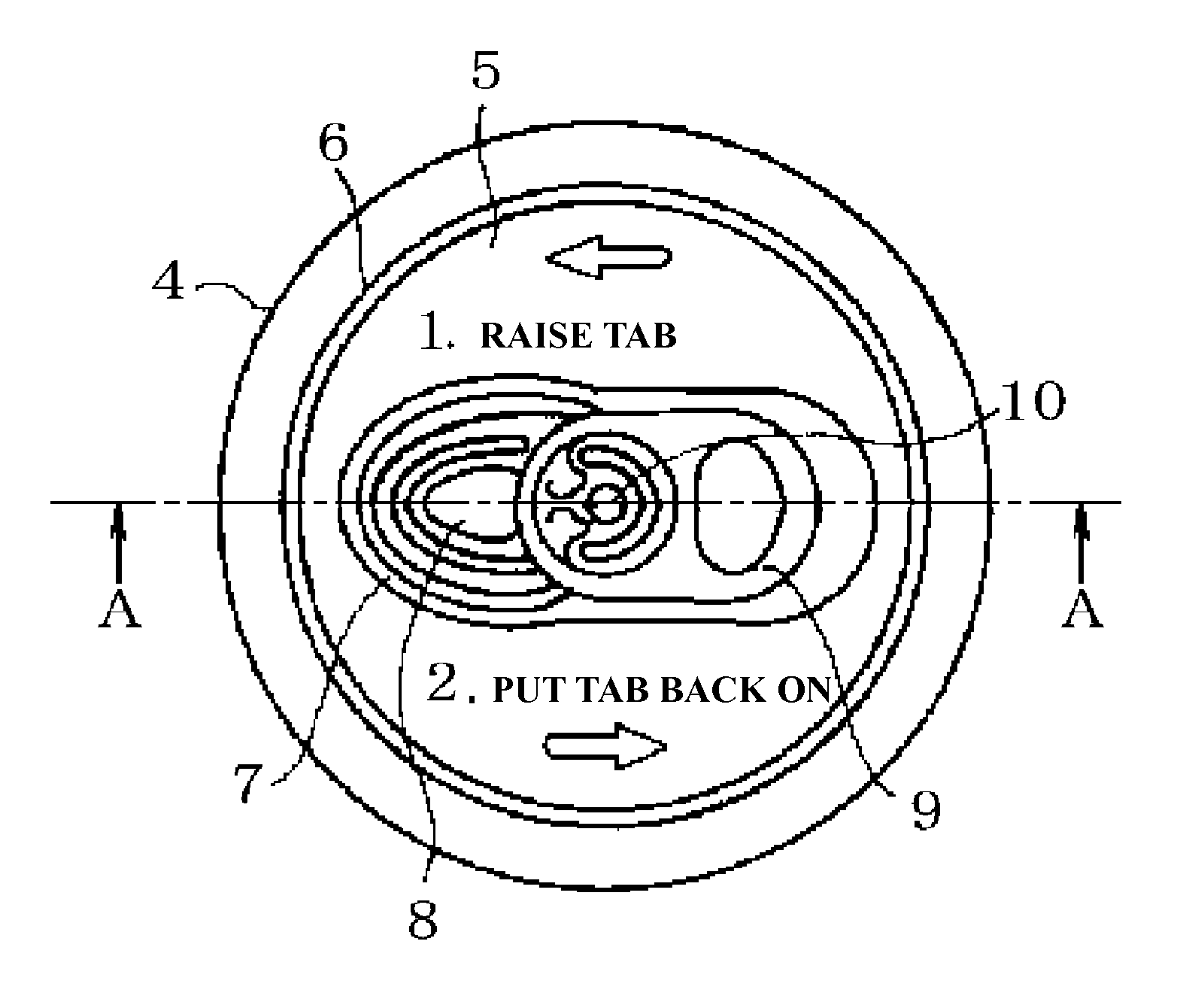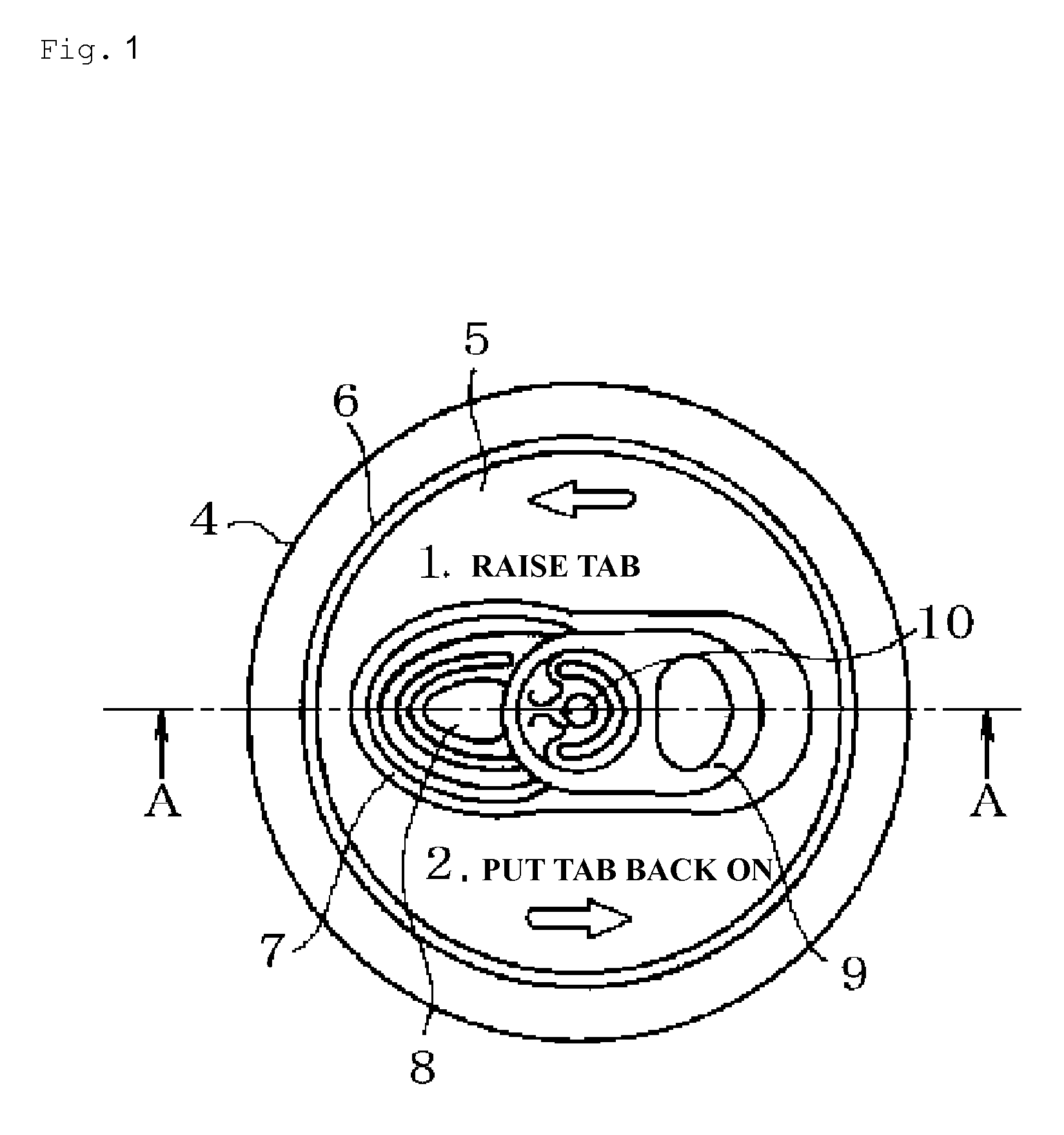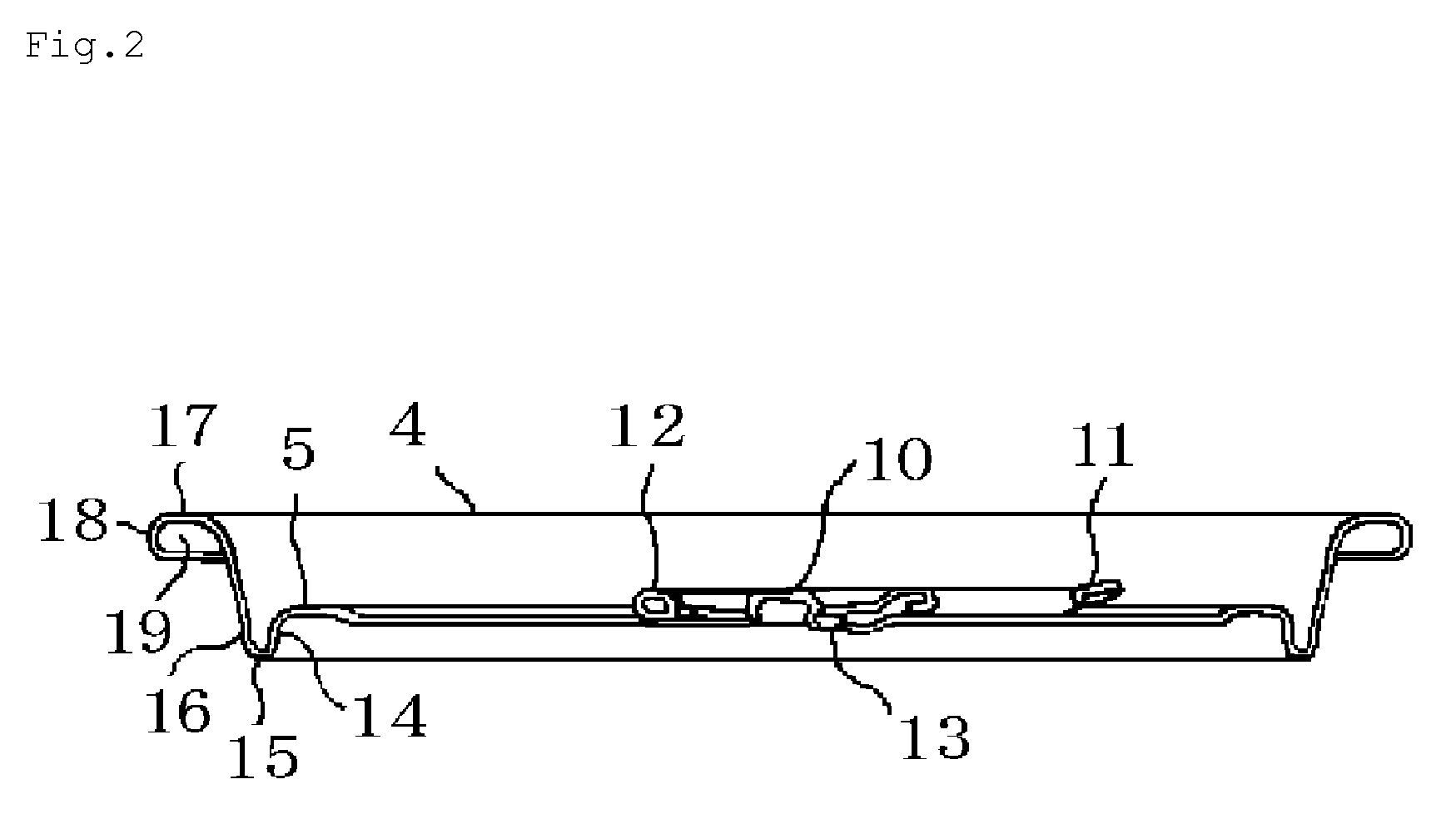Resin-coated seamless aluminum can and resin-coated aluminum alloy lid
a technology of seamless aluminum cans and aluminum alloy cans, which is applied in the direction of liquid handling, application, and closures using stoppers, can solve the problems of less corrosion resistance and adhesiveness of aluminum, less corrosion resistance of aluminum compared to surface-treated steel materials, and easy formation of cans and can lids. , to achieve the effect of reducing the cost of manufacturing
- Summary
- Abstract
- Description
- Claims
- Application Information
AI Technical Summary
Benefits of technology
Problems solved by technology
Method used
Image
Examples
embodiment 1
(Embodiment 1)
Preparation of Polymer
[0136]A water-soluble polymer is a polymer expressed by the formula (I) in which X is independently a hydrogen atom or a Z group (=—CH2N(CH3)2) in respective constitutional units expressed by the formula (I) and an introducing ratio of the Z group per one benzene ring is 0.5, and an average molecular weight of the organic compound is 3000 when all X are hydrogen atoms.
Calculation of Introducing Ratio of Z Group
[0137]A quantitative analysis of elements C,H,N,S contained in the prepared polymer are determined using an EA1108-type elemental analyzer made by FISONS Inc. Based on a result of the quantitative analysis, Z group introducing ratio is calculated.
Preparation of Treatment Liquid
[0138]Ion-exchanged water at room temperature is filled in a vessel equipped with an agitator. While agitating the ion-exchanged water at a room temperature, 71 g / L of 40% zirconium fluoride hydrogen acid (containing 17.6% as Zr), 15 g / L of 85% phosphate and 9 g / L of 5...
embodiment 2
(Embodiment 2)
[0139]A water-soluble polymer is a polymer expressed by the formula (I) in which X is independently a hydrogen atom or a Z group (=—CH2N(CH3)2) in respective constitutional units expressed by the formula (I) and an introducing ratio of the Z group per one benzene ring is 0.5, and an average molecular weight of the organic compound is 1500 when all X are hydrogen atoms. Besides the above-mentioned constitutions, the water-soluble polymer of this embodiment is substantially equal to the water-soluble polymer of the embodiment 1.
embodiments 3 to 16
(Embodiments 3 to 16, Comparisons 1 to 8)
[0140]In the above-mentioned embodiment 1, a content of zirconium, a content of phosphorous, polymer concentration, pH, average molecular weight of polymer, and the Z-group introducing ratio of polymer are changed as shown in Table and other conditions are set substantially equal to the embodiment 1.
(Cleaning of Aluminum Alloy Sheet)
[0141]A commercially-available aluminum-manganese alloy sheet (kind: JIS A3004, sheet thickness: 0.3 mm, sheet size: 200×300 mm in case of can, kind: JIS A5182, sheet thickness: 0.25 mm, sheet size: 200×300 mm in case of can lid) is subject to spray treatment under conditions in which agent concentration is 20 g / L, treatment temperature is 60° C. and treatment time is 7 seconds using a commercially-available strong alkaline degreasing agent “FINE CLEANER 4377” (trademark, made by Nihon Parkerizing Co., Ltd.). Thereafter, an alkali content remaining on a surface of the aluminum-manganese alloy sheet is cleaned with...
PUM
| Property | Measurement | Unit |
|---|---|---|
| thickness | aaaaa | aaaaa |
| thickness | aaaaa | aaaaa |
| thickness | aaaaa | aaaaa |
Abstract
Description
Claims
Application Information
 Login to View More
Login to View More - R&D
- Intellectual Property
- Life Sciences
- Materials
- Tech Scout
- Unparalleled Data Quality
- Higher Quality Content
- 60% Fewer Hallucinations
Browse by: Latest US Patents, China's latest patents, Technical Efficacy Thesaurus, Application Domain, Technology Topic, Popular Technical Reports.
© 2025 PatSnap. All rights reserved.Legal|Privacy policy|Modern Slavery Act Transparency Statement|Sitemap|About US| Contact US: help@patsnap.com



